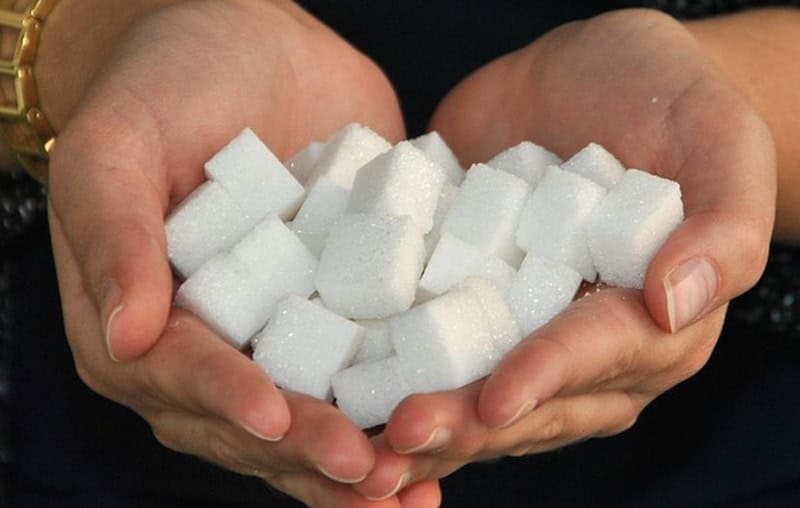The agricultural practices for beet sugar vs cane sugar contribute to differences in harvesting time.
The agricultural practices for beet sugar vs cane sugar contribute to differences in harvesting time.
Blog Article
Discover the Uses and Perks of Beet Sugar Vs Cane Sugar in Your Daily Diet Regimen
Discovering the distinct qualities of beet and cane sugar exposes more than just their sweetening capabilities; it highlights their special effect on health and cookeries. Beet sugar, known for its subtle flavor, is typically preferred in fragile desserts, whereas cane sugar, with its hint of molasses, adds splendor to robust dishes. Each kind holds its own dietary profile and glycemic effects, inviting a deeper understanding of their functions in a well balanced diet regimen and sustainable usage practices.
Origin and Production Procedures of Beet and Cane Sugar

The distinct environments and soil types required for growing sugar beetroots and sugarcane add to distinctions in their farming techniques and geographic circulation, affecting the economics and sustainability of their production. beet sugar vs cane sugar.
Nutritional Contrast Between Beet Sugar and Cane Sugar
Regardless of originating from different plants, beet sugar and cane sugar are nutritionally very similar, both mainly containing sucrose. Each provides concerning 4 calories per gram, converting to approximately 16 calories per teaspoon. Structurally, both sugars are composed of roughly 99.95% sucrose, with marginal quantities of other compounds like wetness and trace minerals, which do not substantially modify their nutritional profiles.

Eventually, when choosing in between beet sugar and cane sugar based upon dietary material alone, both deal identical benefits and disadvantages as they are essentially kinds of the exact same molecule-- sucrose, supplying fast power without other nutrients.
Influence On Wellness: Glycemic Index and Caloric Content
Exploring additionally into the results of beet sugar and cane sugar on wellness, it is essential to consider their glycemic index and caloric content. Both sugars are categorized as sucrose, which includes sugar and fructose. This composition leads them to have a similar influence on blood glucose levels. The glycemic index (GI) of both beet and cane sugar is around 65, classifying them as high-GI foods, which can create fast spikes in blood sugar degrees. This is a vital element for people taking care look at here now of diabetes mellitus or those attempting to stabilize their energy levels throughout the day.
Each type of sugar contains about 4 calories per gram, making their caloric material matching. For those keeping an eye on calorie consumption, specifically when taking care of weight or metabolic health and wellness conditions, comprehending this equivalence is essential (beet sugar vs cane sugar). Extreme intake of any type of high-calorie, high-GI food can add to health issues such as weight problems, heart illness, and Look At This insulin resistance.
Environmental and Economic Considerations of Sugar Manufacturing
Beyond health effects, the manufacturing of beet and cane sugar likewise raises substantial ecological and financial problems. Sugar beet growing tends to need cooler environments and has a lower geographical footprint contrasted to sugar cane, which grows in exotic areas. Nevertheless, both crops are intensive in regards to water usage and land profession, possibly resulting in logging and water deficiency. Economically, the international sugar market is highly unpredictable, affected by changes in international trade policies and aids. Several countries incentivize sugar production through financial backing, skewing market rates and influencing small farmers adversely.
Additionally, the use of pesticides and fertilizers in both beet and cane sugar growing can lead to soil destruction and contamination, more influencing biodiversity and neighborhood water bodies (beet sugar vs cane sugar). The option in between cultivating sugar beet or cane often rests on local ecological problems and economic elements, making the sustainability of sugar manufacturing a complex problem
Culinary Applications and Taste Distinctions
While the ecological and economic aspects of sugar manufacturing are without a doubt substantial, the selection in between beet and cane sugar likewise influences culinary applications and taste profiles. Beet sugar, stemmed from the sugar beet plant, is recognized for its remarkably neutral taste. This makes it a flexible component in cooking, where it does not change the flavor of other parts. It liquifies rapidly and is perfect for usage in cakes, cookies, and pastries.
Walking cane sugar, extracted from sugarcane, usually preserves molasses traces, which give a distinctive splendor and deepness. The mild variant in moisture web content in between beet and cane click here for info sugar can impact the texture and consistency of recipes, making cane sugar a preferred choice for details dishes that profit from its one-of-a-kind properties.

Conclusion
To conclude, both beet and cane sugar have unique origins and production processes, providing comparable dietary accounts with minor distinctions in sodium web content and taste. While their impact on health and wellness, specifically concerning glycemic index and calories, is comparable, the option between them usually comes down to environmental, financial variables, and certain cooking needs. Recognizing these facets can direct customers in making informed decisions that straighten with their wellness goals and taste preferences.
Report this page